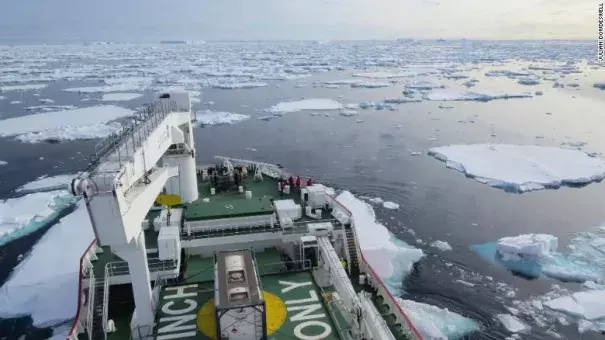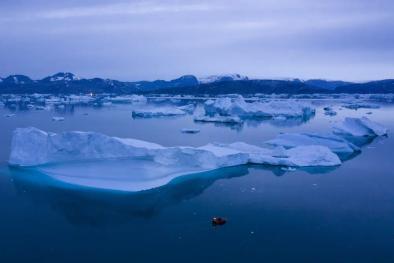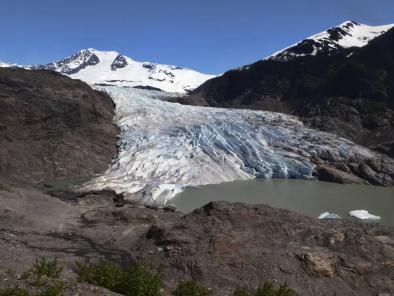Antarctic ice sheets capable of much faster melting than we thought

Climate Signals Summary: Climate change is causing rapid glacier and ice sheet melt in Antarctica, which is significantly accelerating sea level rise.
Article Excerpt: Antarctic ice sheets retreated at speeds of up to 50 meters (164 feet) a day at the end of the last Ice Age -- about ten times quicker than the fastest retreating sheets of today -- researchers have found.
Studying patterns of wave-like ridges on the Antarctic seafloor, scientists from the Scott Polar Research Institute at the University of Cambridge found that some 12,000 years ago, ice retreated at speeds in excess of 10 kilometers (6.2 miles) a year -- far more rapid than today's retreat rates, which are calculated using satellite data.
Researchers warn that, should climate change carry on weakening ice shelves in coming decades, we could soon see similar levels of ice retreat -- more than were thought possible -- with huge implications for global sea levels.
...
The Larsen Ice Shelf originally covered an area of 33,000 square miles, but has shrunk dramatically as air temperatures warmed in the second half of the 20th century.
Sections of the shelf have disintegrated and broken away, and in 2017 around 12% of the remaining lower middle section of the shelf broke away as a single massive iceberg, measuring some 2,240 square miles.
...
"We now know that the ice is capable of retreating at speeds far higher than what we see today. Should climate change continue to weaken the ice shelves in the coming decades, we could see similar rates of retreat, with profound implications for global sea level rise," Dowdeswell [director of the Scott Polar Research Institute] added in a statement.
A recent study by NASA showed that Antarctica and Greenland's ice sheets lost 118 gigatons and 200 gigatons of ice on average per year, which caused the sea level to rise by about half an inch between 2003 and 2019.
Warmer summer temperatures are chiefly to blame for this ice loss, according to NASA. The warm temperatures have melted ice from the surface of the glaciers and ice sheets.
...
Before, if models predicted high rates of melt, experts may be inclined to believe this was not possible, Dowdeswell said. "But now we can say it has happened, and therefore it is possible."
Experts have warned that over the next three decades, hundreds of millions of people worldwide are at risk of losing their homes as entire cities sink under rising seas.
Scientists have warned that the planet's warming is accelerating melting in glaciers and ice sheets from Greenland to Antarctica, and that sea levels will likely rise more than previously projected by the end of this century.
Experts have said that sea level rise is likely to exceed three feet by 2100 if carbon emissions continue to increase, and many of the 680 million people around the world living in low-lying coastal areas will experience annual flooding events by 2050.
Related Content






